Similar Posts
(Editor’s note: This article was submitted by Fr Paul Walliker, an Antiochian Orthodox Priest who has a Master of Visual Art (Painting) from Monash University, Australia. The focus of his project for his Masters Degree was Santa Maria Antiqua. He also recently attended the conference held at the British School of Rome on Santa Maria Antiqua)
In the heart of the Forum in Rome there stands building, which is partially hidden from view that at a second glance seems odd. It has a roof and there is window glass to be seen which seems incongruous compared to its neighbours that are glorious ruins. A small sign tells that it is Chiessa Santa Maria Antiqua and it is closed to the public. Most people move onto to the Temple of Augustus. Yet, the simplicity hides a great secret, for here is the “Greek Church” of Rome, the place that almost displaced St John Lateran as the seat of the Bishop of Rome. Hidden upon it’s walls are some of the oldest iconographic frescoes that still survive dating back to the 5th century and spanning the period up till it’s burial by an earthquake in 847 AD. It was once home to the majestic and mysterious Icon of the Theotokos, the Santa Maria Antiqua which dates from just after the time of the Council of Ephesus and provided a prototype for many, if not all the ancient Icons of the Theotokos revered in Rome today.
History of the Site
This is an area fraught with difficulty. As far as I can work out there are now 3 theories as to the origins and original purpose of the building. However, one thing is clear; it was the final enclosed section at the bottom of a processional way from the Imperial Palaces that overlooked the Forum. It was here Emperors, Governors and their retinue made themselves ready before entering the Forum proper. Likewise, if things were rowdy it marked a place of sanctuary where they could escape to from the crowds. Thus, we know that there was a military presence and function. As Christianity became the religion of the empire and the Emperor a Christian, so to become a member of the Praetorian Guard it became obligatory to be a Christian. So we find by around 380 C.E. the first evidence of Christian art and also worship in this space. At some stage after the conversion and stabilization of Christianity as the faith of the Empire early signs appear that this area had become a devotional space.
Over the years, the structure was expanded in size taking its final size in the mid 4th century C.E. It was sometime after the Council of Ephesus and the later Council of Chalcedon that the oldest fresco of the Theotokos, of which there are but fragmentary remains, was painted. It shows her in imperial like regalia seated on a throne and yet she is not yet the “imperial” Theotokos of Ravenna just yet. Parts of it survive in what is known as the “palimpsest” which provides at least three clearly discernible layers of art.
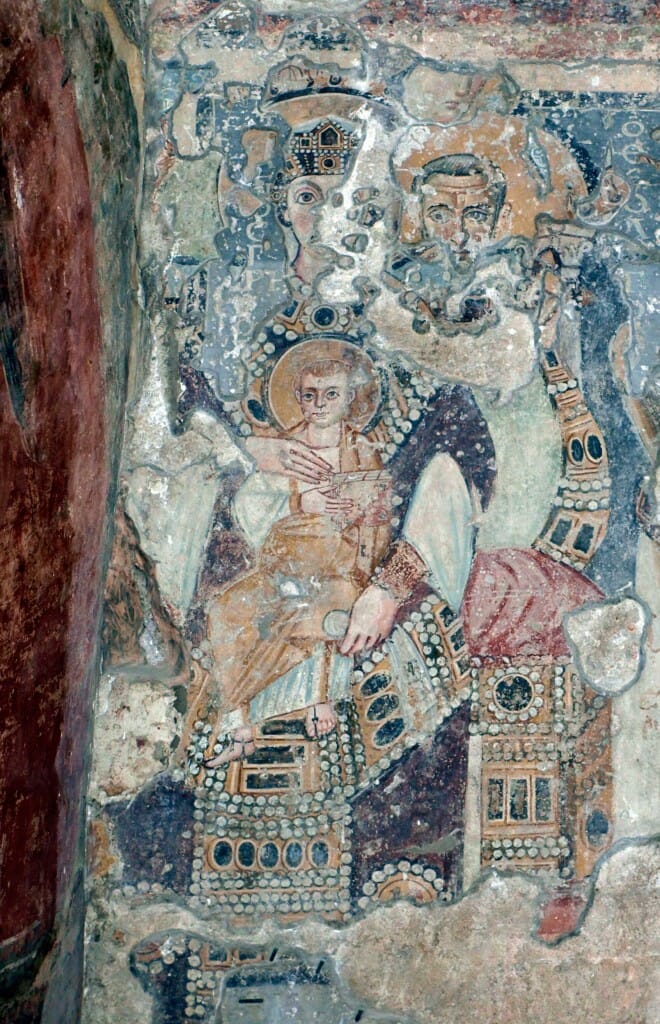
Around the same time the “Santa Maria Antiqua” icon dating from around 455 AD also became associated with this place. It is a very large panel icon of the hodegitra style in encaustic Its survival and place in the Roman Church history is a fascinating story which is still being explored notably by two orthodox scholars, one in Oxford and the other in Moscow, at the moment. It is cocooned in the Church of Santa Francesca Romana away from public access whilst an 18th century copy adorns the space above the High Altar for the public to see.
![]()
During the time of the Emperor Justinian II (c 565 – 578 C.E.) various architectural alterations were made including the construction of the apse. The construction of the apse led to the destruction of much of a fresco that depicts the Blessed Virgin Mary as a Byzantine Empress. However it was not just the Emperors who made the changes to the building. As it evolved Santa Maria Antiqua became the focal point for two things that would shape it’s future. The first is that it became the focus for the greek clergy and community in Rome. Records show that by the beginning of the 7th century the Church was very much the place where visiting greeks came to worship. As many of the Popes of the time also were from the eastern part of the Empire, Santa Maria Antiqua became like there private chapel and thus they decorated it without the restraints that may have come if they tried to do it at St John Lateran, St Peters or the other major basilicas. Secondly, Santa Maria Antiqua became a “diakonia”, a place where material aid and spiritual assistance was given. It also became the focus for a “healing” ministry with the Chapel to the left of the Presbytery that was dedicated to the Medical Saints primarily focused on Sts Cyrus and John. There is also evidence of some form of ministry to women and those experiencing fertility problems with the area outside the Chapel of the Physicians having images of St Anna and the Child Theotokos, the Three Holy Mothers – St Anna and the Theotokos, the Theotokos and the Christ Child and St Elizabeth and St John the Baptist.
It was first known as “Santa Maria Antiqua” in the document “De Locis Sanctis Martyrum” in 635 C.E. Various Popes over the years made alterations and redecorated the Church that will be referred to later as we look at the art.
Notable periods of artistic work were conducted in the papacy’s of Martin I, John VII, Zacharias and Paul I though possibly the most significant images for Orthodox Christians which are to be found in Santa Maria Antiqua fall outside of these periods. Each Pope contributed something unique in the works commissioned. Those, which Pope Martin had painted, reflect the victory over the monothelitist heresy at the Lateran Council of 649 and were finally condemned at the 6th Ecumenical Council in 680-681. Whilst only a limited amount of the works survive, a stunning wall frieze occupies the left side of the nave with Christ enthroned with the Doctors of the Roman Church on Christ’s right side whilst on the left stand the Fathers of the Eastern Church. The inscriptions are in greek and the art reflects the heavy hand of the byzantine style and it would seem, as is often the case in this humble Church, the Pope is sending message to imperial authority. The works of John VII form the largest amount of extant works. John VII had a deep love of Santa Maria Antiqua, so much, so that it was recorded that he seriously thought of moving the cathedra of the Bishop of Rome to Santa Maria Antiqua. Much of the art found in the Chapel of the Physicians’ plus the works surviving in the apse and triumphal arch date from his period together with the Chapel of the 40 Martyrs which is adjacent to Santa Maria Antiqua. There is an intense movement towards the image of the Crucified Christ in the art together with an interesting change in the use of written language. The Old Testament quotes are in greek, whilst those from the New Testament are in latin. The style of art still shows a deeply imbedded byzantine style which is fusing with a more fluid roman style. Part of the surviving text on the Triumphal Arch is taken from the Vespers of Holy and Great Friday from the Church of Jerusalem.
It was during the time of Pope Zacharias that saw the decoration of the Chapel of Theodotus on the left side of the presbytery. It is so named as the donor was Theodotus, an official of the papacy. It is important to remember that whilst this Chapel was being decorated the first iconoclastic period was in full flight in the Eastern part of the Empire. Zacharias predecessor Gregory III had already condemned iconclasm as heresy and despite threats from the Imperial Legate in Ravenna the popes used Santa Maria Antiqua to thumb their noses at the heretical Emperor. The remarkable survival of this Chapel gives us a delicious taste of what the whole of the building must have been like with its striking colours. Finally Paul I contribution is to found largely in the Atrium area, the best example being the niche painting of Abbacyrus ( St Cyrus).
The end of Santa Maria Antiqua came about with the earthquake of 847 C.E. when much of the Church was buried in a landslide. Pope Leo IV had a new church constructed across the Forum naming it Santa Maria Nova and assigned to it the role Santa Maria Antiqua had to the new building. Various items from the ruins were retrieved including the large image, known as “Santa Maria Antiqua” dating from the 5th century. Attempts were made to use parts of the building where it was structurally sound and so there were a number of chapels still in use at the time of the Norman sack of Rome in 1084, yet the earth had other ideas and gradually the site was covered and another church built over the top Santa Maria Liberatrice. The site was mined for stone for the building of St Peters Basilica by Julius II. There were minor excavations that occurred from time to time during the 16th and 17th centuries but it was not until 1900 Giacono Boni undertook the first systematic excavation of the site. G M Rushforth from the British School of Rome undertook a systematic investigation and wrote it up in the Papers of the British School of Rome in 1902 and this work still forms the starting point for any study of Santa Maria Antiqua. Since that time there have been numerous academic studies made of the site and the World Monuments Fund continues the work of conservation, under approval of the Italian Government who is unable to make any financial contribution to the task.
The Special Significance of Santa Maria Antiqua for Orthodoxy
Santa Maria Antiqua has a pivotal place in Orthodox Iconography. This appears to be a sweeping statement that will cause consternation from Alexandria to Zagorsk, that a ruined church in the centre of Rome, a former papal private chapel should have a place of preeminence. For Santa Maria Antiqua is the home of the earliest surviving examples of two images that are to be found in just about every Orthodox Church throughout the world. They are;
The Anastasis – The figure of the risen Christ reaching out to Adam, Eve and other figures such King David. The image is situated at the rear of the Church at the door leading to the ramp up to the Imperial Palace Complex. The dating appears to place it in the time of John VII (705 – 707 AD)
The second is the Deesis – The figures of the Theotokos to the right of Christ and the Forerunner to the left interceding with Christ. This dates back to the time of the visit by Sophronius in 620AD and it flows from an encounter he had at the Church in Alexandria dedicated to St Cyrus with a former monophsite Sub Deacon. The story is not well known, though St John Damascene cites it in his “Defence of Holy Images”. Unfortunately, most translations, particularly on the Internet do not have it as it was considered along with many others to be superfluous by the protestant translators.
I have much more I could say about the dating, composition and origins of these images. However, let me state quite clearly here that I have spent many many years seeking the origins of these images and the earliest examples of them. I am prepared to state categorically that these are the earliest examples and I have the backing of many scholars to say that here is the source, fount from which has flowed the countless examples to found across Orthodoxy. All of them find their source in the little greek church in the Forum in Rome.
Conclusion
Santa Maria Antiqua began its religious life when it was part of the barracks for the Praetorian Guard. With the withdrawal of the Emperors from Rome to the eastern capital of Constantinople, the imperial complex above became offices, the residence of the Viceroy, and also a papal residence. As result, the Church became a papal peculiar, that is to say a place that was the pope’s private possession where they could do what they wanted. Therefore, it was that we find that there is a rich history of figures, styles and peculiarities reflected in the decoration reflecting the particular devotions of the pope who commissioned the art.
Yet there was more to the Church than just that. It served as Diaconia, a place where food, welfare and other assistance was provided to populace. The church was also known as the “Greek church”. Many of the clergy and monks who served there were from the eastern part of the empire and brought their unique understandings, practices and devotions, art to this place. Here a visitor to Rome from the East could feel at home, a haven in the middle of the capital of Latin Christianity.
All photographs were taken by Paul Walliker with the exception of the image of Santa Maria Antiqua which was supplied to him by Chiessa S. Francesca Roma
The best website to start any web based research is that of Soprintendenza Speciale per i Beni Archeologici di Roma: Santa Maria Antiqua

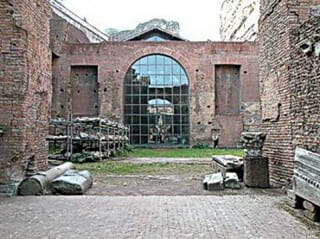
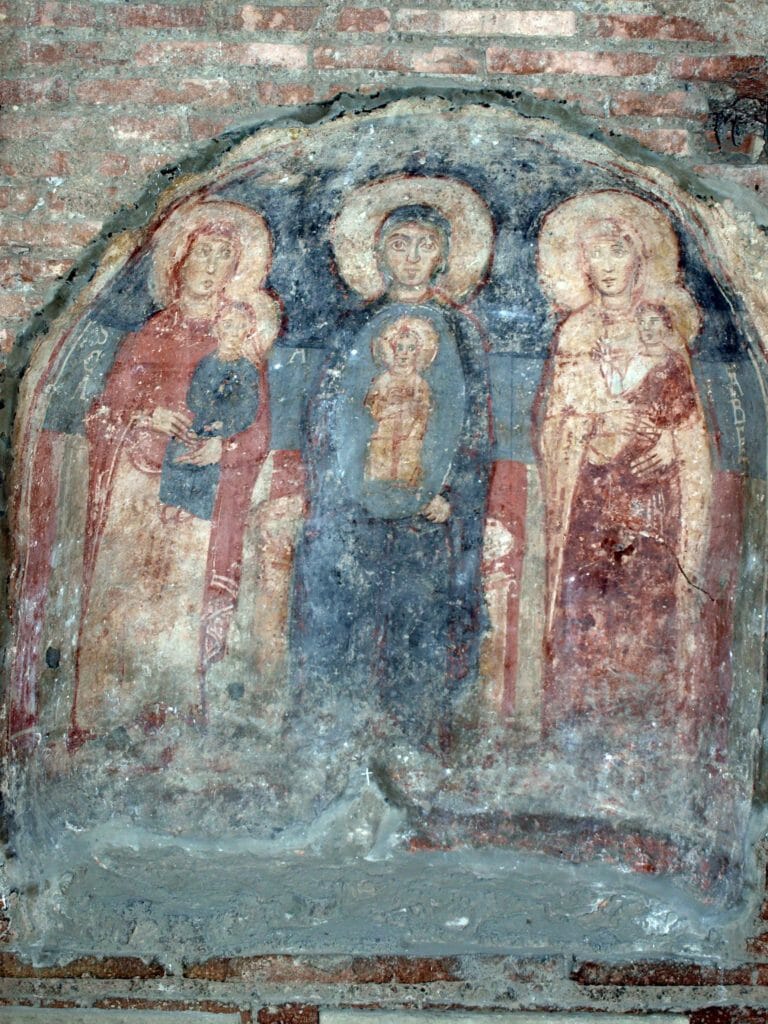
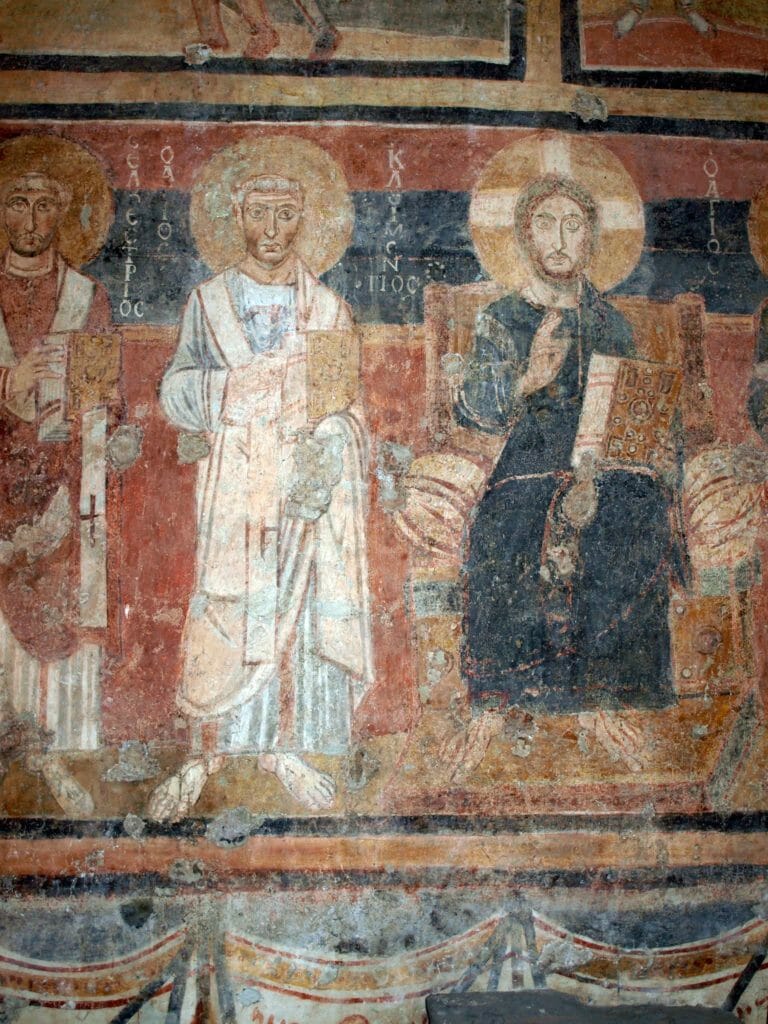

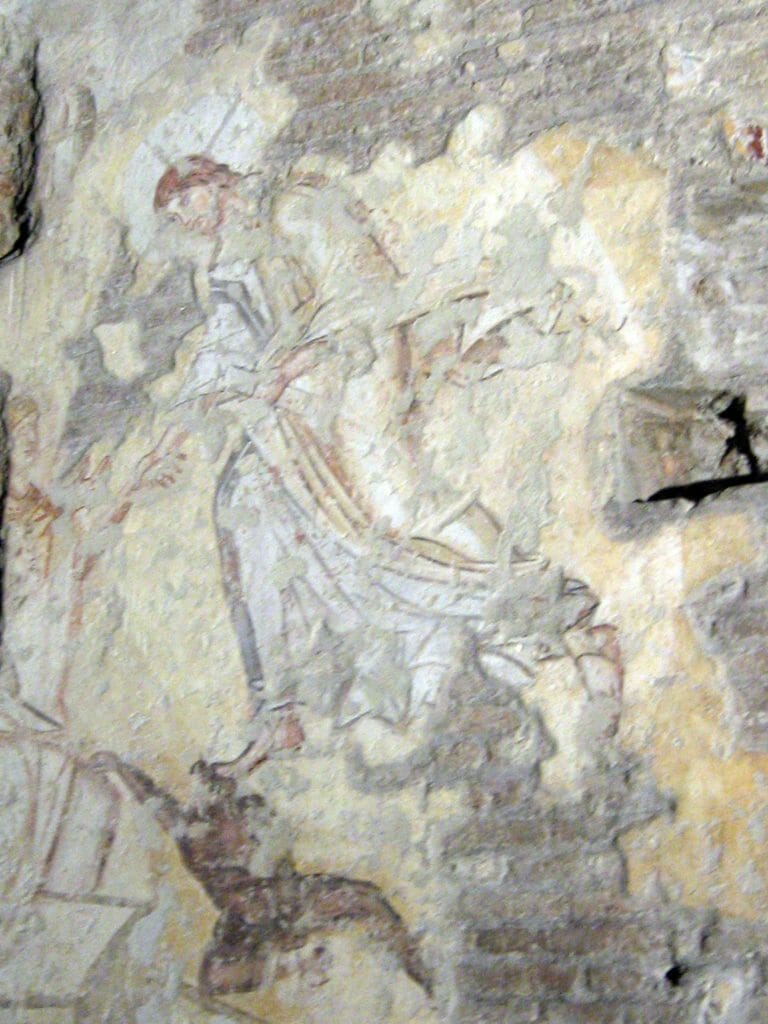
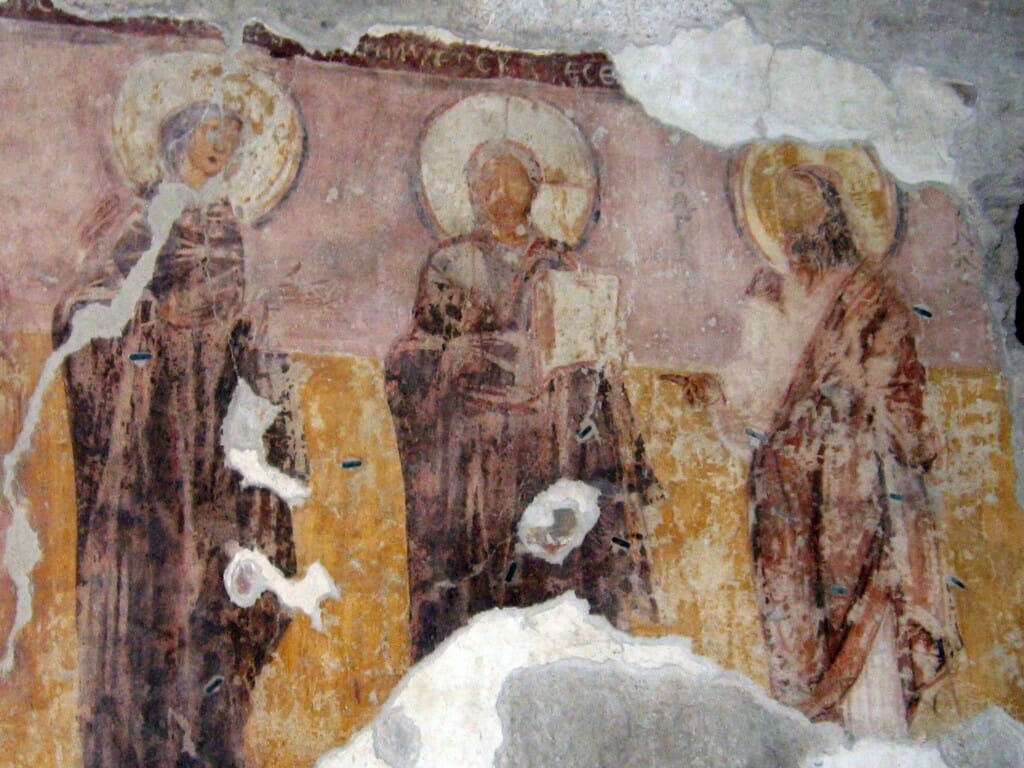
Thank you for sharing! This website is such a stronghold and helps share high quality resources. God bless the OAJ efforts.
With love in Christ from Rockford IL
Fr Jonathan many thanks for your kind comment! I thoroughly endorse your comments about OAJ!